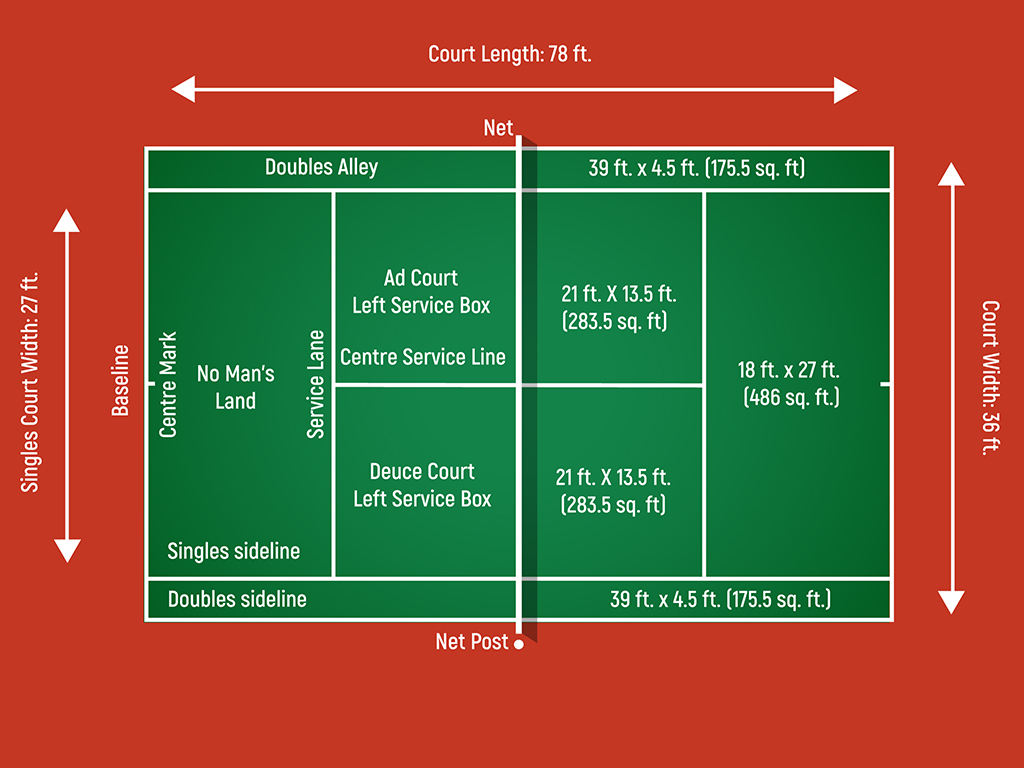Tennis has been around for ages, and while the rules have changed over the centuries the modern game as we know it has remained relatively untouched during the Open Era (Began in 1968 When Grand Slam Tournaments agreed to allow professional players to compete with amateurs). Here we hope to teach you some of the rules and scoring system in order to be able to play properly with others and to prevent any confusion on the court from happening!
How many players can play at the same time?
– First things first, how many people are needed to play? A tennis match can be played with either one player on each side (singles) or two players on each side (doubles).
Equipment Needed
– There are 3 essential things you need to play tennis:
- Strung tennis racket: No matter the brand, you just need a strung tennis racket with a head size of 100 sq. in. or higher and a grip size that feels comfortable.
- Tennis Balls: Again, the brand doesn’t matter, but for beginners it is highly recommended to use transition tennis balls, which are slightly slower than regular ones.
- Tennis Shoes: Despite you would be able to play tennis with regular shoes, it is highly recommended to use footwear specifically designed for tennis courts, it would help to prevent injuries and perform better on every surface.
Court Surfaces and sizes
– There are 4 main court surfaces that can be played on. They are Hard, Clay, Grass, and finally Carpet. However, the dimensions of the court and the lines will always remain the same. The rectangular-shaped court has a baseline (at the back), service areas (two square spaces just over the net in which a successful serve must land in) and two tram lines down both sides. On a singles match, you would use the inner side tram line and in a doubles match the outer tram line.
– Sizes:

Point System
– Counting the score in a tennis match can seem overwhelming at first but is simpler than it may appear. The server’s score is always announced first before the receivers throughout the game and the score is always said aloud before each serve. There are 3 different components to each person’s score, first, you win Points until you win a Game, once you win 6 Games (or more depending on the tiebreak) you win a Set, usually, tennis matches are either best of 3 sets or best of 6 sets.
The point system of a tennis match is as follows:
• No points are scored = Love (0)
• 1 point scored = 15 points
• 2 points scored = 30 points
• 3 points scored = 40 points
• 4 points earned = set point (set over)
For a tennis player to win a game, he/she must win with at least a two-point lead. If the score is tied at 40 to 40 (what is called as a Deuce), a player must earn two consecutive points (an Advantage point and Game Point) to win the game. If the player who has an Advantage point loses the next point, the score will be Deuce once again.
A set is won when a player has won a minimum of six games with a two-game advantage over his opponent, for example, the potential score for a six-game set maybe 6 – 0 or 6 – 4 but not 6 – 5. In a scenario where the score is tied at 5 – 5, a player must win 2 consecutive games before he wins a set. For example, a player may win a set with a score of 7 – 5 or 8 – 6.
General Rules of Tennis
- A ball must land within bounds for play to continue; if a player hits the ball outside of bounds, this results in the loss of the point for them.
- Players/teams cannot touch the net or posts or cross onto the opponent’s side.
- Players/teams cannot carry the ball or catch it with the racket.
- Players cannot hit the ball twice.
- Players must wait until the ball passes the net before they can return it.
- A player that does not return a live ball before it bounces twice loses the point.
- If the ball hits or touches the players, that counts as a penalty.
- Any ball that bounces on the lines of boundary are considered good.
- A serve must bounce first before the receiving player can return it.
The post Tennis 101: Crash Course appeared first on Tennis Plaza Blog.
